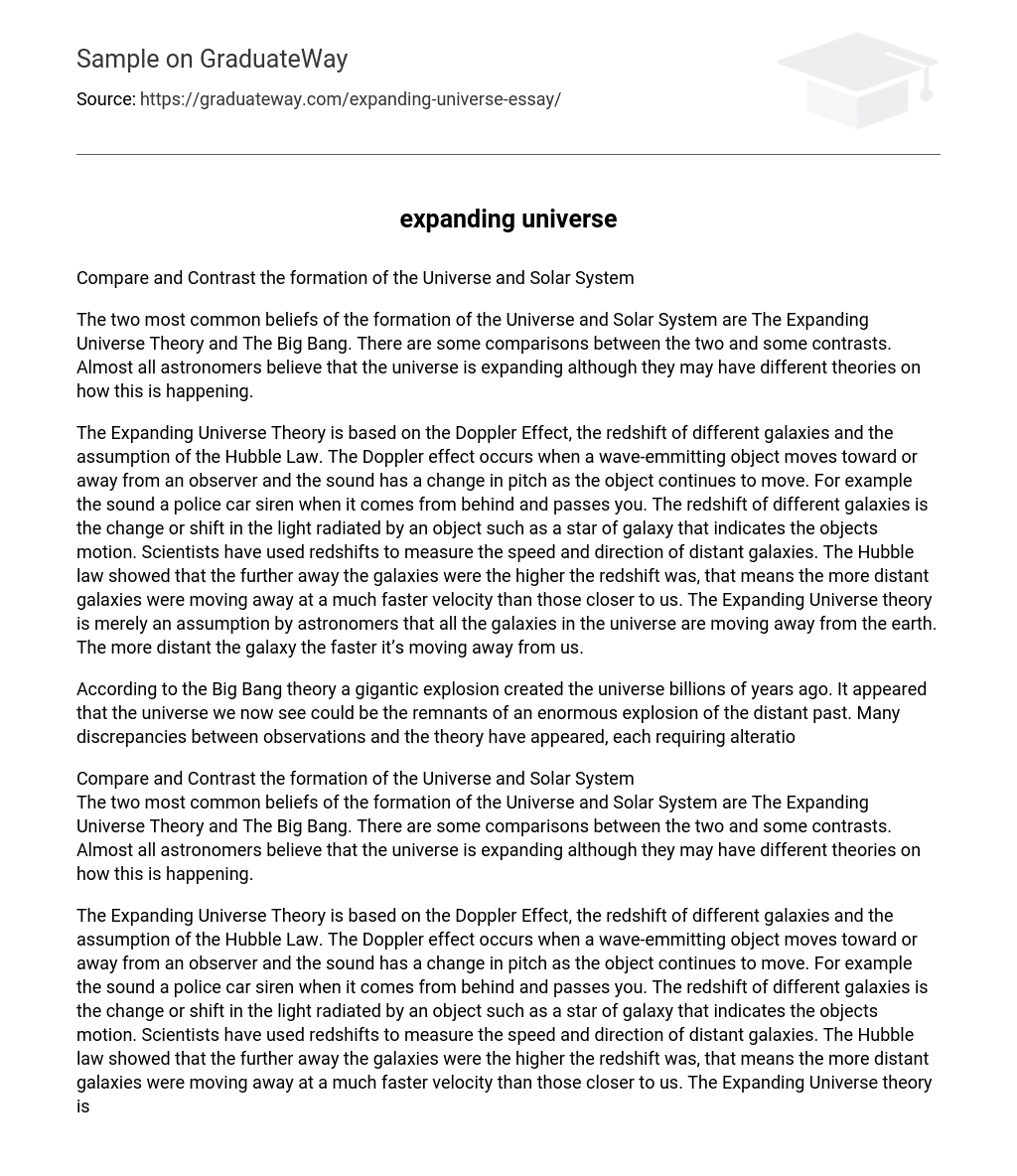The Expanding Universe Theory and The Big Bang are the two main theories that explain the formation of the Universe and Solar System. Although they have similarities and differences, most astronomers concur that the universe is expanding, yet they provide distinct explanations for this phenomenon.
The Expanding Universe Theory is based on the Doppler Effect concept. This effect is related to the redshift of galaxies and the Hubble Law. The Doppler effect occurs when a source emitting waves moves towards or away from an observer, causing a change in pitch. An example often used to illustrate this phenomenon is the sound of a police car siren changing as it approaches from behind and then passes by.
The redshift of different galaxies reveals changes in the light they emit, indicating their motion. Scientists use redshifts to measure the speed and direction of distant galaxies. The Hubble law showed that as galaxies move farther apart, their redshift increases, suggesting that more distant galaxies are moving away from us faster than closer ones. According to the Expanding Universe theory, all galaxies in the universe are moving away from Earth. Furthermore, the greater a galaxy’s distance from us, the faster it is receding.
The concept of the Big Bang theory suggests that billions of years ago, the universe came into existence through a colossal explosion. This ancient event is thought to have shaped the current state of the universe. Nevertheless, discrepancies between observations and the theory have prompted necessary modifications.





